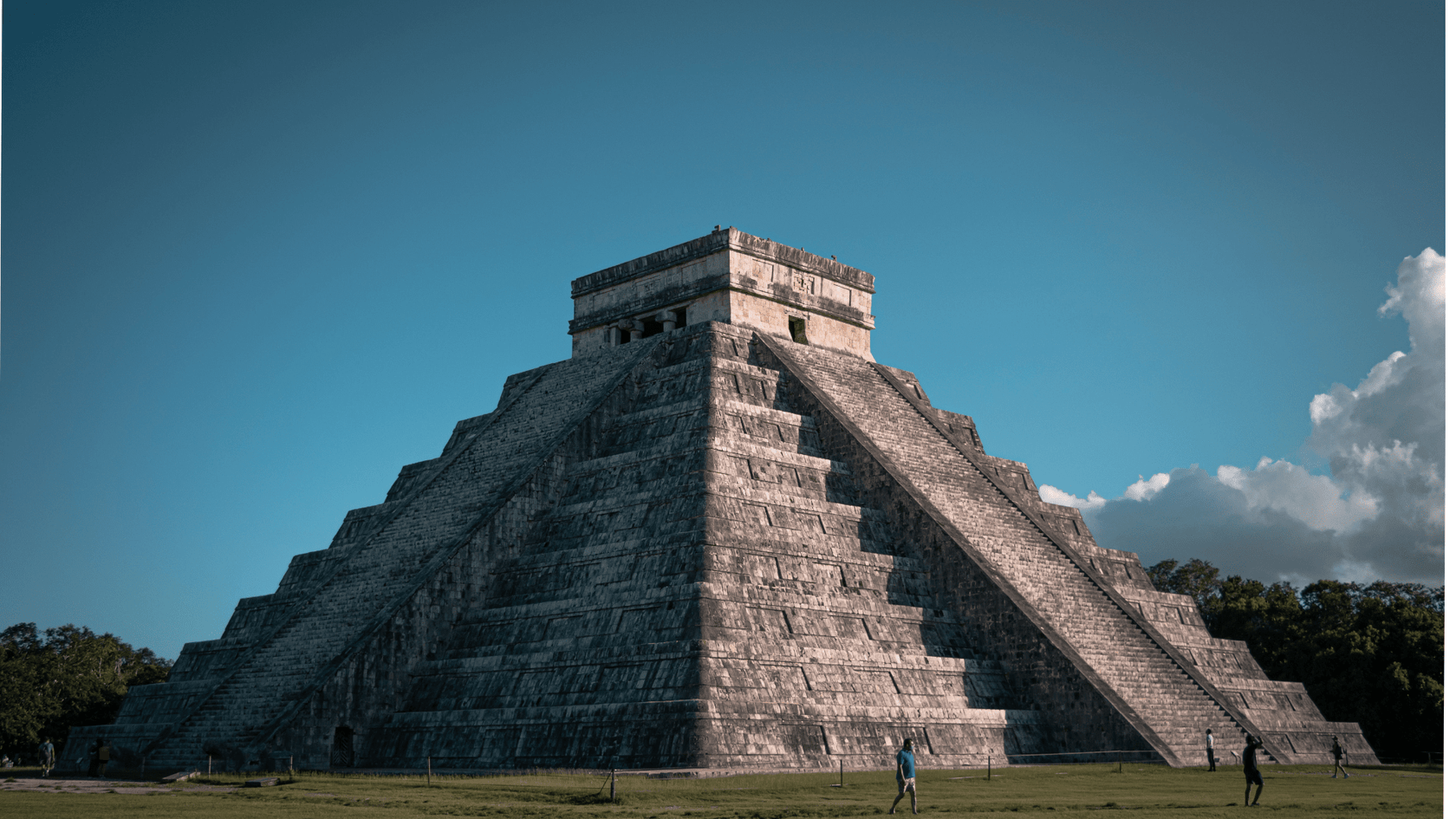Author: Paul Connolly
Water-to-Go North America
n recent years, there have been reports of water-borne illness outbreaks affecting tourists in Mexico. For instance, between May 2008 and April 2010, nine travelers developed laboratory-confirmed Legionnaires' disease after staying at a resort in Cozumel, Mexico. Additionally, a severe sickness bug known as Cyclospora has been linked to travel in Mexico, with British health authorities reporting that 73% of British cases were connected to such travel.
You have been planning and saving and will soon depart for your much-deserved vacation in Mexico. But what about the water? According to the Centers for Disease Control and Prevention (CDC), Mexico water systems still pose risks to travelers, making tap water unsafe to drink during your stay. But why? Why does everyone warn against drinking the water in Mexico? Why does the water in Mexico make you sick? Can you drink the water in Mexico safely? How can I protect myself?
In this comprehensive guide, we'll explore whether water in Mexico is safe to drink, strategies to avoid waterborne illnesses, why a water purifier bottle is your best defense against illness, and we'll answer frequently asked questions about drinking water safety for visitors to Mexico.
How Not To Get Sick in Mexico
Mark and his wife just returned from Mexico. Click below to hear how they avoided getting sick from the local water by using a Water-to-Go water purifier bottle.
Readers of this blog can get a 15% discount on Water-to-Go bottles. Use coupon code “MEXICO15” at checkout.
---------------------------------------------------
The Superior Solution: Water Purifier Bottles vs. Water Filter Bottles
When it comes to staying safe from Mexican water contamination, understanding the difference between water filter bottles and water purifier bottles is crucial for your health.
Why Water Purifier Bottles Are Essential for Mexico Travel
The Water-to-Go Active 25oz Water Filtration Purifier Bottle represents the gold standard for travel water safety. Unlike basic water filter bottles that only remove larger particles and some bacteria, water purifier bottles eliminate ALL harmful contaminants that could make you sick, including:
- Viruses (Hepatitis A, Hepatitis E, Norovirus, Rotavirus)
- Bacteria (E. coli, Salmonella, Cholera, Campylobacter)
- Parasites (Giardia, Cryptosporidium, Cyclospora)
- Heavy metals (Lead, Arsenic, Mercury)
- Chemicals (Fluoride, Chlorine, Nitrates, Pesticides)
- Microplastics
The Critical Limitation of Basic Water Filter Bottles
Many travelers make the dangerous mistake of relying on basic water filter for Mexico products that provide inadequate protection. Standard water filter bottles cannot remove viruses like Hepatitis. These microscopic pathogens pass right through conventional filters, leaving you vulnerable to serious illness.
Why Water-to-Go Is the Best Water Filter for Mexico
When searching for the best water filter for Mexico, the Water-to-Go purifier bottle stands alone because it's the only bioplastic water purifier bottle that removes the illness-causing contaminants found in Mexico tap water, including viruses. This makes it the most effective water bottle with filter for Mexico travel available.
Mexican Bottled Water: Limitations and Environmental Impact
While bottled water remains an option for travelers, it comes with significant limitations and environmental concerns that make a water purifier bottle the superior choice.
The Hidden Risks of Bottled Water in Mexico
Not all bottled water in Mexico meets the safety standards you might expect. Some bottled water is simply bottled tap water that hasn't undergone proper purification processes. When purchasing bottled water, always:
- Stick to well-known and reputable brands: Ciel, Bonafont, E-Pura, Sante, Electropura
- Always check that the bottle cap is sealed and hasn't been tampered with
- Avoid buying water from street vendors
- Look for labels indicating purification processes, not just "bottled water"
The Environmental Crisis of Single-Use Plastic Bottles
Bottled water creates a massive environmental problem through single-use plastic pollution. In Mexico alone, millions of plastic bottles end up in landfills and oceans daily, harming marine life and ecosystems. This is why choosing a reusable water purifier bottle solution is not just better for your health – it's essential for environmental protection.
The Eco-Friendly Solution: Water-to-Go's Revolutionary Approach
Water-to-Go bottles represent the most environmentally responsible water filter for a Mexico trip available today. Here's why they're revolutionizing sustainable travel:
Made from Plants, Not Petroleum
Unlike conventional plastic bottles made from petroleum-based materials, Water-to-Go bottles are manufactured from bioplastic derived from sugarcane. This plant-based plastic significantly reduces the carbon footprint and environmental impact of your travel hydration solution. The bottles are as durable, machine washable and recyclable as traditional plastic.
One Filter Replaces 400 Single-Use Bottles
Each Water-to-Go filter cartridge purifies enough water to replace 400 single-use plastic bottles. This means one Water-to-Go filter prevents hundreds of plastic bottles from entering Mexico's waste stream and natural environments.
Learn more about our commitment to sustainability at our sustainability page.

Comprehensive Mexico Water Safety Strategies
Choose Cooked Foods Over Raw Options
Select cooked foods over raw alternatives to add an extra layer of safety. This strategy is particularly important when enjoying Mexico's famous street food culture.
Proper Fruit and Vegetable Handling
According to the Mayo Clinic, follow the rule: "boil it, cook it, peel it, or forget it." Peelable fruits like bananas and avocados are safe; non-peelable items like grapes and berries should be avoided unless properly washed with purified water.
The Hidden Danger of Ice in Mexico
Ice presents a significant but often overlooked risk. Since ice is typically made from local tap water, it can harbor the same contaminants that make Mexico water dangerous to drink directly. Unless you're certain the establishment uses purified water for ice production, request beverages without ice. Just say "sin hielo" [seen YEH-loh].
Advanced Water Safety Tips for Mexico Travelers
Hotel and Resort Water Safety
Even in luxury resorts, water quality can vary significantly. Many establishments use local municipal water supplies that may not meet international safety standards. A water purifier bottle for travel to Mexico ensures consistent protection regardless of your accommodation level.
Regional Water Quality Variations
Water quality varies dramatically across Mexico's different regions:
- Coastal areas often face additional contamination from industrial runoff and sewage
- Mountain regions may have cleaner source water but inadequate treatment facilities
- Urban centers typically have better infrastructure but aging pipes can introduce contaminants
- Rural areas often rely on wells or surface water with minimal treatment
Hydration During Activities
Mexico's warm climate and outdoor activities increase your hydration needs. Having a reliable water filter for Mexico becomes even more critical when you're sweating and need to drink more water throughout the day.
Health Consequences of Contaminated Water in Mexico
Understanding what makes water in Mexico dangerous helps emphasize the importance of proper precautions:
Common Waterborne Illnesses
- Traveler's Diarrhea: Up to 60% of US travelers to Mexico develop traveler's diarrhea.
- Hepatitis A: Can cause liver inflammation lasting several months
- Typhoid Fever: A serious bacterial infection requiring immediate medical attention
- Giardiasis: Parasitic infection causing severe digestive symptoms
- Cholera: Though rare, outbreaks still occur in some regions
Long-term Health Impacts
Some waterborne pathogens can cause lasting health effects, including chronic digestive issues, liver damage, and increased susceptibility to other infections. This makes prevention through proper water purification absolutely essential.
Conclusion: Your Best Defense Against Waterborne Illness
When planning your Mexico adventure, remember that can you drink the water in Mexico isn't just a question – it's a health decision that could make or break your vacation. A high-quality water purifier bottle like the Water-to-Go Active 25oz provides the most comprehensive protection against all waterborne threats while supporting environmental sustainability.
Don't let waterborne illness ruin your Mexican vacation. Invest in proper water purification, stay informed about local conditions, and enjoy Mexico's incredible culture, cuisine, and landscapes with confidence.
Answers to Common Questions
Can you drink the water in Mexico City?
In Mexico City, it's advisable for visitors to avoid drinking tap water directly from the faucet. The water quality can vary, and the local tap water may not be treated to the standards suitable for consumption by tourists.
Can you drink the water in Cabo?
While treated, drinking Cabo's tap water isn't recommended due to aging pipes and limited water quality data. Stick to bottled or purified water from a water filter bottle for peace of mind.
Can you drink the water in Puerto Vallarta?
Puerto Vallarta's tap water is considered safe by official standards, but many locals and visitors still opt for bottled water or a water filter bottle due to potential contamination in older pipes or personal preference.
Can you drink the water in Cancun?
While the tap water in Cancun may technically meet the Mexican government's safety standards, exercising extreme caution when it comes to consumption is highly recommended for visitors since Cancun's water distribution system, like many in Mexico, has aging infrastructure that can introduce contaminants like bacteria or parasites into the water supply despite treatment.
I accidentally brushed my teeth with Mexican water. What do I do?
If you accidentally brushed your teeth with Mexican water, take precautions to minimize potential risks. Avoid ingesting more water, rinse your mouth thoroughly with bottled or purified water, and refrain from consuming tap water. While accidental exposure is generally minimal, these steps help reduce any potential health concerns associated with uncertain water quality. If symptoms persist, seek prompt medical attention.
If I get sick can I take Imodium and Pepto-Bismol. together?
No. According to Healthline, interactions can make one or more of the drugs involved less effective. They can also increase your risk of side effects. Because of this, you shouldn't take Imodium A-D and Pepto-Bismol together. Taking them together won't increase how well they work for you.
Is bathroom sink water safe to drink in Mexico?
In Mexico, it is generally not considered safe to drink water directly from the bathroom sink. Water from bathroom taps may not be treated to the same standards as water from kitchen taps, and there is a higher risk of contamination. To ensure safe drinking water, it is recommended to use bottled water or purified water from a water filter bottle for drinking and oral hygiene purposes. Taking this precaution helps minimize the risk of waterborne illnesses and contributes to a healthier experience during your time in Mexico.
Why is the Water in Mexico Bad?
While it's not accurate to say all water in Mexico is "bad," tap water can be risky. The water in Mexico faces challenges primarily due to inadequate infrastructure, industrial pollution, agricultural runoff, microbial contamination, and geographical factors. Microbial contamination, including bacteria and parasites, is widespread, leading to waterborne illnesses.



